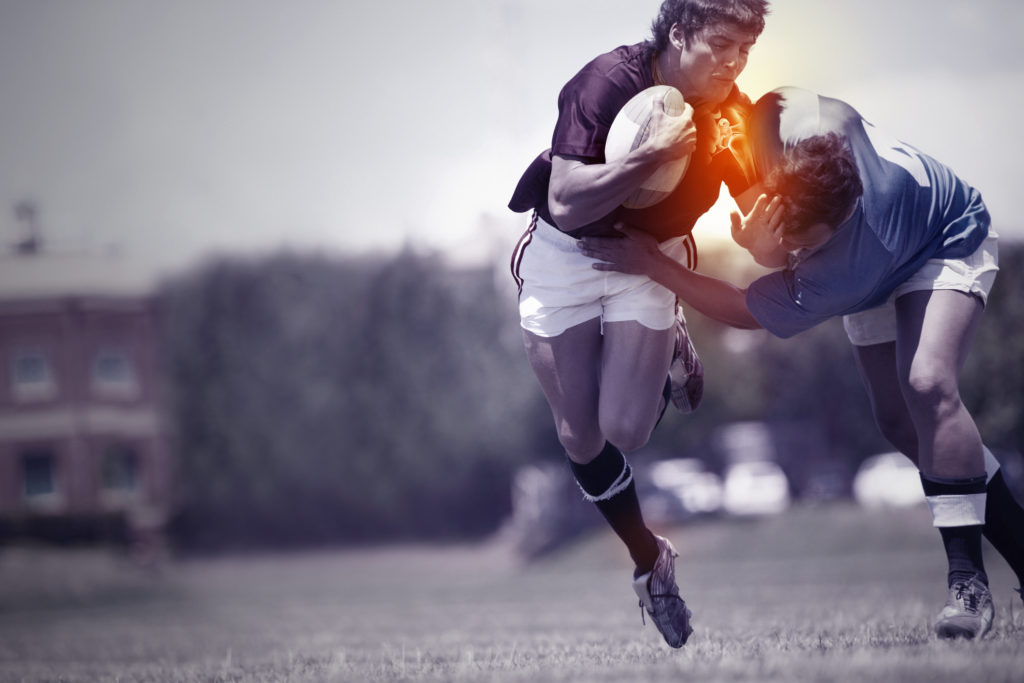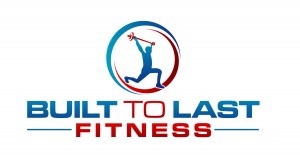Strength Training and Sports Injuries
Dealing with Injuries: Down but Not Out

*DISCLAIMER* This article was created for informational purposes only. It is not intended to be a substitute for professional medical advice, diagnosis, or treatment. Always seek the advice of your physician or other qualified health provider, especially if a medical condition is present. Never disregard professional medical advice or delay in seeking it because of something you have read on this website.
It’s Saturday, you’re at your friend’s house for a summer cookout. The sun is out, the tunes are on, and all is right with the world. Someone busts out the Nerf ball and before you know it you’re in a game of two-hand-touch. Game is tied, next point wins. Your buddy playing QB tells you to go deep. You sprint full speed to the end zone. Just then it feels like someone stabs you in the back of the leg. Game over – you are injured.
Maybe you can relate to this story. Maybe you’ve “thrown your back out” playing golf. It can happen to anyone from the professional athlete to the weekend warrior. The purpose of this two-part series is to explore injuries, why they happen, what to do about them, and how to prevent them. Let’s begin.
Injuries and Pain
If you are injured, you are in fact, damaged. Dr. Andreo Spina defines an “injury” on the Functional Anatomy Seminar’s website as: “tissue damage occurring when applied load/stress exceeds the load bearing capacity of the tissue.” Pain can be a good indicator that you have sustained an injury, but that is not always the case. You may have heard the popular maxim, “Pain lives in the brain.” This saying refers to the fact that pain is never localized in a specific joint, tendon, or muscle. Rather, pain is a sensory experience created in the brain after certain signals are communicated through the nervous system. A good way to think of pain is to think of an alarm sounding in your brain that lets you know something is not right. While this may be an oversimplification, it is important to listen to your brain and body when they are trying to tell you something. There are many individuals and organizations that have dedicated themselves to educating about pain.The Canada-based PainScience.com has a bevy of interesting articles and blog posts, many of them controversial, that explore several items that will be discussed here.
I’m think I’m Injured – Now What?
Okay, you think you’ve sustained a sports injury – now what? First, you should have it evaluated by a medical professional. You may require an MRI or an X-ray, or a physical examination.
*Important Note: Only licensed doctors can legally diagnose medical conditions. It is not within a personal trainer’s scope of practice to do this. We, as trainers, can only speculate and refer you on to a higher echelon of professional care.
Also, please don’t try to self-diagnose an injury with WebMD. Feel free to do your research – just get it checked out too. If you aren’t rushing off to the ER in an ambulance, it’s on you to take the first crucial steps.
RICE or NO RICE?
In 1978, sports medicine doctor, Gabe Mirkin, M.D. coined the acronym RICE as a model for treatment of acute sports injuries. It became highly popular and is still utilized to this day. RICE stands for REST, ICE, COMPRESSION, and ELEVATION. You are probably familiar with this drill – sprain an ankle, stay off your foot (REST), apply a bag of frozen peas (ICE), wrap it tightly with an ACE bandage (COMPRESSION), and prop your foot up on a few pillows (ELEVATION). This was thought to be the ideal way to manage swelling and inflammation. Fast forward forty years or so and Dr. Mirkin had reversed his position – particularly on icing injuries. Evidently, the practice of using ice as an effective treatment modality doesn’t hold up to the latest research. Using movement, compression, and “sometimes” elevation, is now being championed by many.
Gary Reinl and Dr. Kelly Starrett (of MobilityWOD), two prolific members of the sports medicine and fitness communities, were incredibly vocal about this paradigm shift and even released a book about it, called ICED! The Illusionary Treatment Option. Why the shift? It really comes down to viewing the body’s natural inflammatory response in a different manner. Reinl posed the question “if inflammation was so bad then why have we, as humans, evolved to produce inflammation at the site of the injury?” Also, “what is the true purpose of inflammation?” His hypothesis, now supported by science, is that inflammation post-injury is a targeted increase in circulation of blood and nutrients to the site of the injury. Many skeptics treat the notion of inflammation being a good thing as heresy. This is likely due to confusion between full-body chronic inflammation (which is an adverse condition) and the acute inflammation that occurs post-injury.
In addition, inflammation is not the same thing as swelling. Swelling is the result of fluid and waste products pooling with the normal healthy blood supply. The cause of swelling is related to the lymphatic system, or rather, the ineffective utilization of the lymphatic system. To briefly explain, there are two main systems of circulation in the body. One system is the circulatory system, and it consists of the heart and the entire network of blood vessels. The other system is the lymphatic system. These two systems work in concert to move blood, lymph, and various waste products through a web of channels and ducts to be processed. Here is the tricky thing, the lymphatic system relies heavily on skeletal muscle contraction to squeeze the lymph in and out of the target areas. COMPRESSION can also help move excess lymph out of the affected area. RESTing, however, promotes the pooling of lymph which manifests itself as swelling when proper drainage is not facilitated. Important note: ICE does reduce swelling and inflammation, but more importantly it also has an analgesic effect. Pain reduction is always welcome. Whether you believe in icing or not, there is some merit in experimenting with treatments. I personally have had success in working through injuries with several active recovery techniques, heat, compression, and other modalities. Do what works for you. Scroll to the bottom of the article to see additional resources.
Use It or Lose It
The best way to sabotage tissue quality and motor skills is to do nothing. If you take away only one thing from this article, let it be the following: you can always do something and doing something is always better than doing nothing. Physical Therapy (PT) is usually the next best step. There are many brilliant therapists out there who can help you safely rehabilitate your body with exercise. However, it’s on you to do your homework. Often times the injured are more physically capable than they realize. Here’s one caveat — common sense is required. If you are injured, physical activities and sports will need to be modified accordingly. The last thing you want to do is exacerbate your current injury and cause irreparable damage. Functional Range Conditioning (FRC), Dr. Spina’s revolutionary mobility system, uses techniques that include isometric loading. Isometric loading reduces joint sheer by balancing the load across an articulation while simultaneously developing muscle strength and other positive tissue adaptations. Don’t worry if any of this confuses you. The whole concept can be simply stated like this. You sustained an injury because your tissue was forced to bear a load it wasn’t physically prepared to handle. Now you need to move and safely strengthen the tissue again to rebuild resiliency. Isometric contractions are one way to reduce the risk of damage by helping spread the load across joints. Whatever you choose to do, do something. This puts you back in the driver’s seat and lets you take action. You might be down but you’re not out.
Resources:
Books:
– ICED! The Illusionary Treatment Option
Websites:
– Pain Science: https://www.painscience.com/
– FRC: https://www.functionalanatomyseminars.com/functional-range-conditioning/
– MobilityWOD: https://www.mobilitywod.com/
- Video with Kelly Starrett and Dr. Reinl #1: https://www.mobilitywod.com/propreview/people-weve-got-to-stop-icing-injuries-we-were-wrong-sooo-wrong-community-video/
- Video with Kelly Starrett and Dr. Reinl #2: https://www.mobilitywod.com/propreview/a-year-later-peoples-weve-got-to-stop-icing-a-year-later-community-video/


